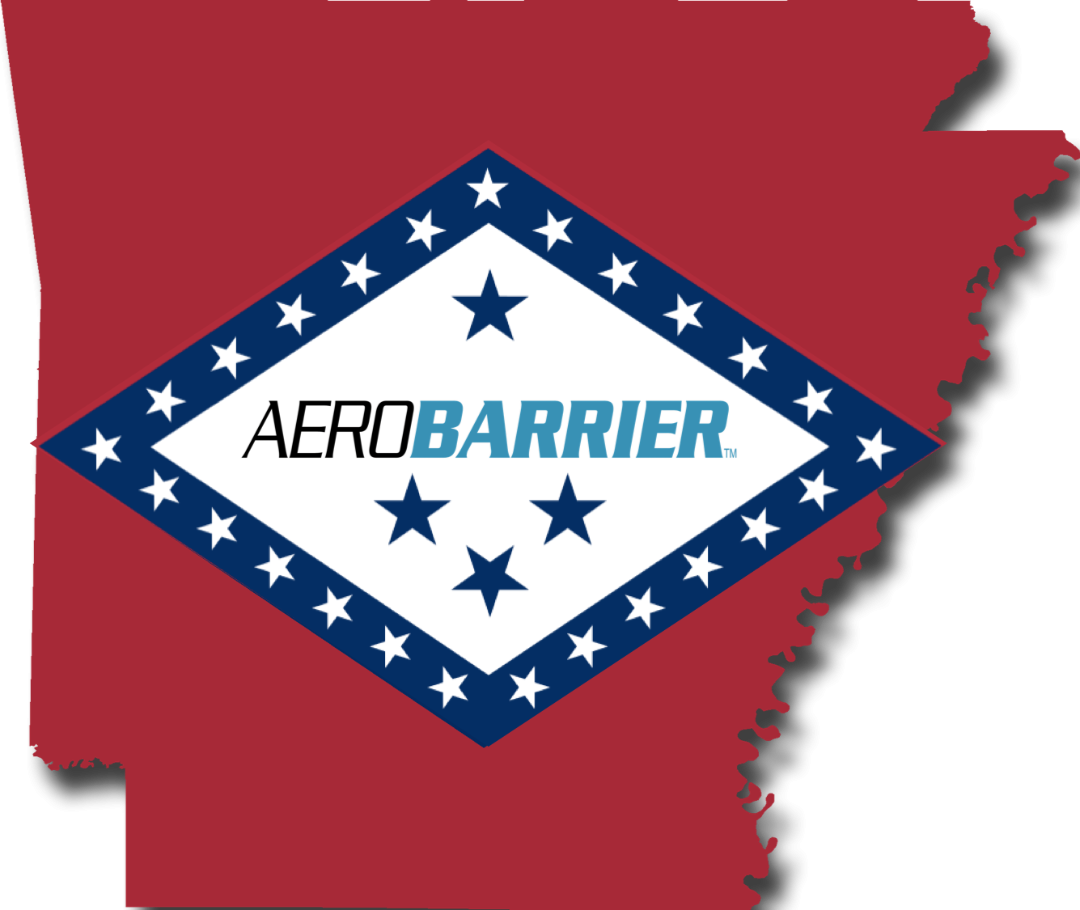How is Air Leakage measured?
The AeroBarrier system uses a standard blower door device to measure envelope leakage in real-time during the process. The system tracks air leakage using three different metrics: Normalized Leakage Area ( in square inches), Leakage Volume Rate (in cubic ft/min or CFM) and Air Change per Hour at 50 Pascals of pressure (orACH50).
How long after the sealing process can work resume in the space?
The area needs to be aired out of 30 minutes after the sealing is complete. This is done by opening doors and windows while running the fan. But work can resume in the space as soon as the sealing equipment is removed and 30 minutes has passed.
Is the sealant safe to use inside the home?
Yes, the AeroBarrier sealant is GreenGuard Gold Certified, meaning that it is both safe to be used inside a home, and also meets the stricter certification requirements for use in schools and healthcare facilities as well.
Can the sealing be performed in cold weather?
The AeroBarrier process requires temperature control and pressurizing the areas to be sealed. Ideal conditions is an outdoor temperature of ≥ 40° F. Sealing can be done below 40° F but may require additional steps for the preparation.
What surfaces need to be protected?
If AeroBarrier is applied at rough-in or right after drywall is installed, there in very minimal surfaces like walls and windows require no covering. All designed openings, such as ducts, electrical and plumbing, need to be covered prior to sealing. All finished horizontal surfaces need to be covered.
What sized leaks can be sealed?
AeroBarrier seals holes as large as 1/2″, and as tiny as a human hair. Aerosol sealing is extremely effective at sealing narrow gaps and extremely small holes that are typically not cost- effective or are missed during manual sealing.
What is the lifecycle of the product, or how long does the tight seal last?
Third-party lab testing reveals AeroBarrier withstands a simulated 50-year durability test, with little or no seal degradation.
Isn’t it bad to completely seal a house?
All new houses in BC require a ventilation strategy in place to make sure fresh air is brought into the house so this won’t be an issue. In a majority or the cases, a Heat Recovery Ventilator (or HRV) is mechanical appliance that is installed to exhaust stale air and draw in fresh outdoor air, providing for higher indoor air quality.
How much does AeroBarrier cost?
Cost will depend on the construction phase and targeted air tighness levels. Once we have your job specifications (size of home, existing airtightness level, etc.), we provide a written quote with 24 hours.
How long does it take to apply?
The entire AeroBarrier process, from setup to completion, takes approximately 4-6 hours for a typical single-family home. When targeting reduced envelope leakage levels of Passive House or ZERH, additional time may be required.
What is the stuff being sprayed?
The AeroBarrier sealant is based on a waterborne acrylic that has been used as a fluid-applied permeable air barrier for many years. The sealant is GREENGUARD Gold-Certified and has been tested according to various ASTM standards and NFPA 285, for fire spread, smoke production, adhesion, antifungal properties, tensile strength, etc.
Is it safe to breathe during application?
No, just like one would not enter an active paint booth without wearing a personal protective equipment (PPE), similar to those worn by painters when spray painting. During application, if a technician has to enter the space while it is being sealed they wear PPE. After the sealing is complete, the area is safe to enter without protective gear within 20 to 30 minutes.
At what stage of construction is AeroBarrier applied?
AeroBarrier may be applied at any time between after framing inspections is complete and prior to occupancy. Although, the ideal time to apply AeroBarrier is post-drywall. Other factors that effect install is build process and climate zone.
